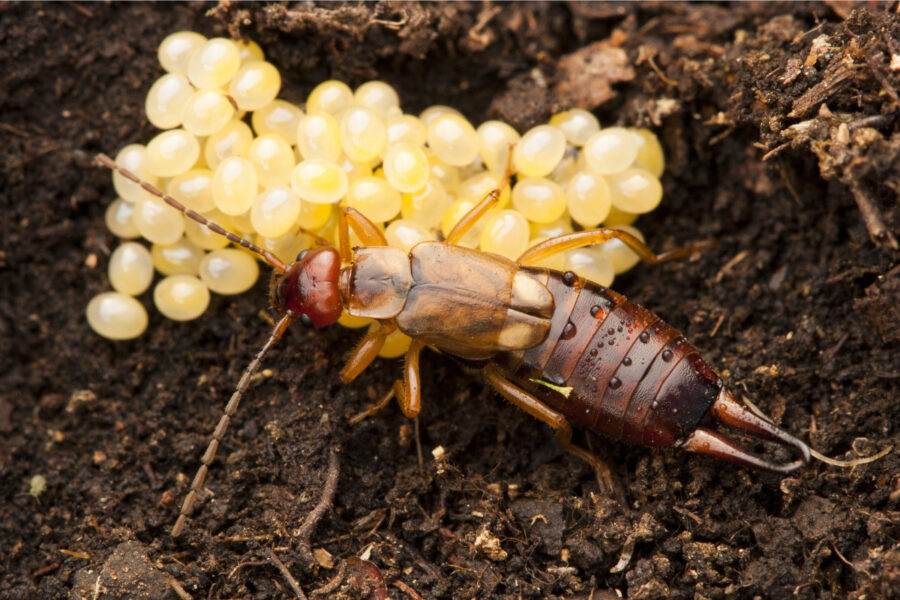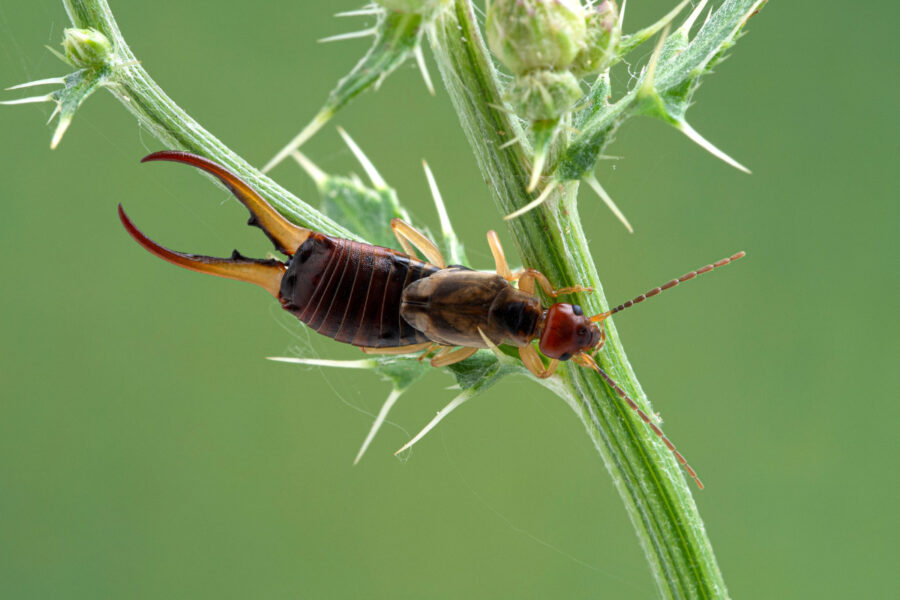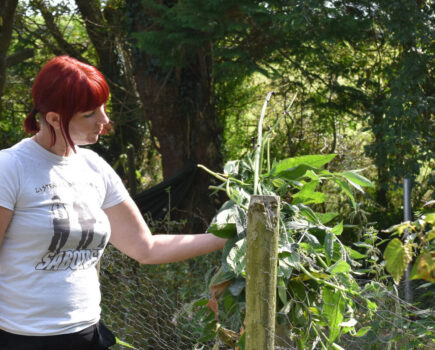Olivia Watts from the Field Studies Council explores some of the amazing things about an often overlooked and highly beneficial garden insect…
Tidying up borders, moving pots, or adding in new plants may all result in you finding one of these fascinating insects — the earwig. Often brushed with a bad reputation, the earwig actually has some surprising but amazing traits and behaviours, and it does not want to live in your ears (don’t worry)!
Earwig anatomy
Unsurprisingly, the most likely species of earwig you will encounter in the UK is the common earwig (Forficula auricularia), although there are three other similar-looking species you could come across, with only minor differences between them.
All earwigs have long, slender, flat bodies with distinctive pincers, which may look unnerving, but they do not have the power to harm humans. For the earwig, they are invaluable as they will be used for defence, grabbing prey, and er, mating.
But one part of their anatomy that is a little less noticeable is their wings. Like most insects, earwigs have two pairs of wings. However, the front pair has evolved into hardened wing cases, protecting the fragile hind wings beneath them. Their hind wings are folded up like a fan and are one of the best examples of compact wing folding in insects, opening up to roughly ten times the size.
Surviving winter
Like many insects, earwigs will be preparing to shelter through the harsh winter weather, but before that they will be looking for a partner to mate and shelter with. You may still see them this month during mild weather, but as it turns colder you are more likely to only find them when tidying up. Lifting pots, moving wood, and cutting back hollow stems may uncover these creatures as they settle down in a shelter, and this is why not being too tidy can really help our wildlife.
However, they may also shelter in the soil, creating a nest where a male and female will spend the winter. Females will carve out a round nest in the ground, laying eggs and guarding them. They are one of the very few insects that show parental care, and they will clean the eggs, keeping fungal spores at bay by periodically ‘licking’ them. The eggs hatch in spring and the young, commonly referred to as ‘wiglets’, resemble smaller versions of the adults. The female will continue to guard them from predators until they are ready to leave and fend for themselves.

Frequently Asked Questions
Q. What species are there in the UK?
A. Common earwig (Forficula auricularia), lesser earwig (Labia minor), Lesne’s earwig (Forficula lesnei) and short-winged earwig (Apterygida media).
Q. Do they harm garden plants?
A. They may eat certain garden plants such as dahlia and clematis, but they are very useful predators of aphids on fruit trees and shrubs in particular .

Interested to learn more?
Explore the variety of species present in gardens across the UK with guides and courses provided by the Field Studies Council: www.field-studies-council.org
Find more tips, advice and articles like this at the Amateur Gardening website. Subscribe to Amateur Gardening magazine now





